
A carillon ( KARR-ə-lon, kə-RIL-yən) is a pitched percussion instrument that is played with a keyboard and consists of at least 23 bells. The bells are cast in bronze, hung in fixed suspension, and tuned in chromatic order so that they can be sounded harmoniously together. They are struck with clappers connected to a keyboard of wooden batons played with the hands and pedals played with the feet. Often housed in bell towers, carillons are usually owned by churches, universities, or municipalities. They can include an automatic system through which the time is announced and simple tunes are played throughout the day.

Mechelen is a city and municipality in the province of Antwerp in the Flemish Region of Belgium. The municipality comprises the city of Mechelen proper, some quarters at its outskirts, the hamlets of Nekkerspoel (adjacent) and Battel, as well as the villages of Walem, Heffen, Leest, Hombeek, and Muizen. The river Dyle (Dijle) flows through the city, hence it is often referred to as the Dijlestad.
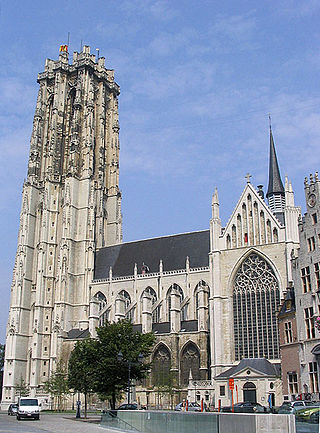
St. Rumbold's Cathedral is the Roman Catholic metropolitan archiepiscopal cathedral in Mechelen, Belgium, dedicated to Saint Rumbold, Christian missionary and martyr who founded an abbey nearby. His remains are rumoured to be buried inside the cathedral. State-of-the-art examination of the relics honoured as Saint Rumbold's and kept in a shrine in the retro-choir, showed a life span of about 40 years and a death date between 580 and 655, while tradition had claimed 775 AD.
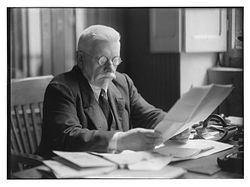
Joseph Guillaume François "Jef" Denyn was a Belgian carillon player from Mechelen. He originally studied to be an engineer. His carilloning career started in 1881 when his father, the official carilloneer of Mechelen, went blind and became unable to play. This caused Denyn to take over. In 1887, Denyn was recognised for his skills and officially appointed to the same position his father had held. He used his engineering knowledge to vastly improve the technology surrounding carillons, which is now used all over Europe and the United States. In 1922, he founded the world's first and most renowned international higher institute of campanology, later named after him, the Royal Carillon School "Jef Denyn" in Mechelen.

Matthias Vanden Gheyn was a Flemish musician from the Baroque/Classical transition period. He is a descendant of the famous bell founding family of the same name. During his life, Vanden Gheyn was considered an outstanding virtuoso of the carillon and organ. He is most famous for composing eleven preludes for carillon, which have become standard repertoire among carillonneurs worldwide since the early 1900s. His spot in history was earned in large part due to the tireless research of his biographer Xavier-Victor-Fidèle van Elewyck, a law and music scholar who considered Vanden Gheyn to be the greatest musician of the Southern Netherlands in the 18th century.
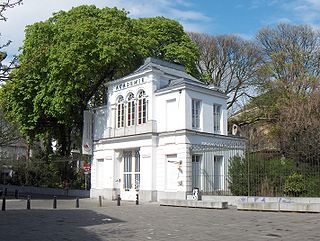
The Royal Academy of Fine Arts Antwerp is an art academy located in Antwerp, Belgium. It is one of the oldest of its kind in Europe. It was founded in 1663 by David Teniers the Younger, painter to the Archduke Leopold Wilhelm and Don Juan of Austria. Teniers was master of the Guild of St Luke—which embraced arts and some handicrafts—and petitioned Philip IV of Spain, then master of the Spanish Netherlands, to grant a royal charter to establish a Fine Arts Academy in Antwerp. It houses the Antwerp Fashion Academy.
Émilien Allard was a Canadian carillonneur and composer. He composed more than 50 works for carillon and made more than 700 transcriptions of carillon music; many of which are still performed in Europe and North America. In 1958, he won the International Carillonneurs' Prize at the Brussels World's Fair. For RCA Victor he released the LP album Carols at the Carillon of Saint Joseph's Oratory for which he wrote the arrangements. His Marche du maréchal and his Marche H.I.C. were recorded by Howard Cable and his Notule No. 1 and Profil canadien no 2. were included on Gordon Slater's LP Bells and Brass. Many of his original manuscripts and papers are a part of the collection at the Bibliothèque et Archives nationales du Québec.

Olesya Rostovskaya is a Russian composer, theremin player, carillonneur, organist, and zvonist.

Gladys Elinor Watkins was a New Zealand music teacher, singer, and pianist. However, she is most notable for being the first official carillonneur of the National War Memorial Carillon in Wellington.

The Nieuwe Toren is located at the Oudestraat in the city of Kampen, in the Netherlands. This Carillon tower was built in the period between 1649-1664 partly according to a design by Philips Vingboons. The lower brick-built part was erected by the Edam mill maker Dirck Janzn. The design for the lantern was made by Philips Vingboons, which may have originally been intended for the Town hall now the Royal Palace of Amsterdam. The construction work went through many setbacks, the work even came to a standstill during the period 1655-1660. It was declared a Dutch National Monument (Rijksmonument) in 1972.
Luc Rombouts is a Belgian carillonneur and author. He is the city carillonneur of Tienen in Flemish Brabant. He is also the official carillonneur of both Leuven University carillons and the Park Abbey. He has given numerous concerts in Europe and the US and appeared in festivals and conventions. Together with Twan Bearda he performs in a carillon duet called The Bells' Angels, exploring, expanding and performing four hand carillon repertoire.
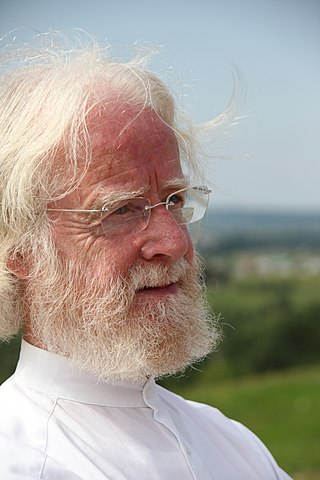
Jozef Willem Haazen is a Flemish musician and carillonneur.

Nora Violet Johnston was an English carillonneur and inventor, and one of only two female carillonneurs active in England during the first half of the twentieth century.
Adèle Celestine Josephina Colson was the first woman to graduate from the Royal Carillon School "Jef Denyn" in Mechelen, Belgium, and the first woman in the world to earn a professional carillon certification.
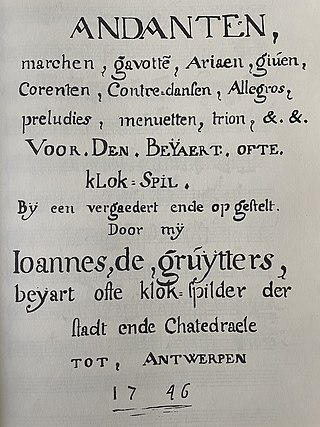
The De Gruytters carillon book is a manuscript notebook that the Dutch Baroque musician Joannes de Gruytters used for performance on the carillon of the city of Antwerp. It contains 194 pieces of music, mostly arrangements and a few original compositions, in the form of marches, gavottes, arias, gigues, preludes, and minuets, among others.
Jan van Lokeren was a Flemish sculptor and woodcarver mostly active in Mechelen.
The Guild of Carillonneurs in North America (GCNA) is a professional association of carillonneurs in North America, dedicated to the advancement of the art, literature, and science of the carillon. It was founded in Ottawa, Canada, in 1936 by American and Canadian carillonneurs so that they could keep better contact and develop the musicality of the instrument. It publishes sheet music, two periodicals, and instrument design standards; holds an annual congress for members to share ideas and developments; administers music examinations for its members; and offers grants for various activities concerning the carillon.
Campanology is the scientific and musical study of bells. It encompasses the technology of bells – how they are cast, tuned, and rung – as well as the history, methods, and traditions of bellringing as an art. Articles related to campanology include:
The Queen Fabiola Competition is an international music competition for carillon. It was established in 1987 by the Royal Carillon School "Jef Denyn" to supersede the smaller annual competitions held in Belgium. Named after Queen Fabiola of Belgium, the competition's original patron, it was modeled after the Queen Elizabeth Competition. Its establishment was supported by the Flemish Government, Antwerp Province, and the city of Mechelen.















